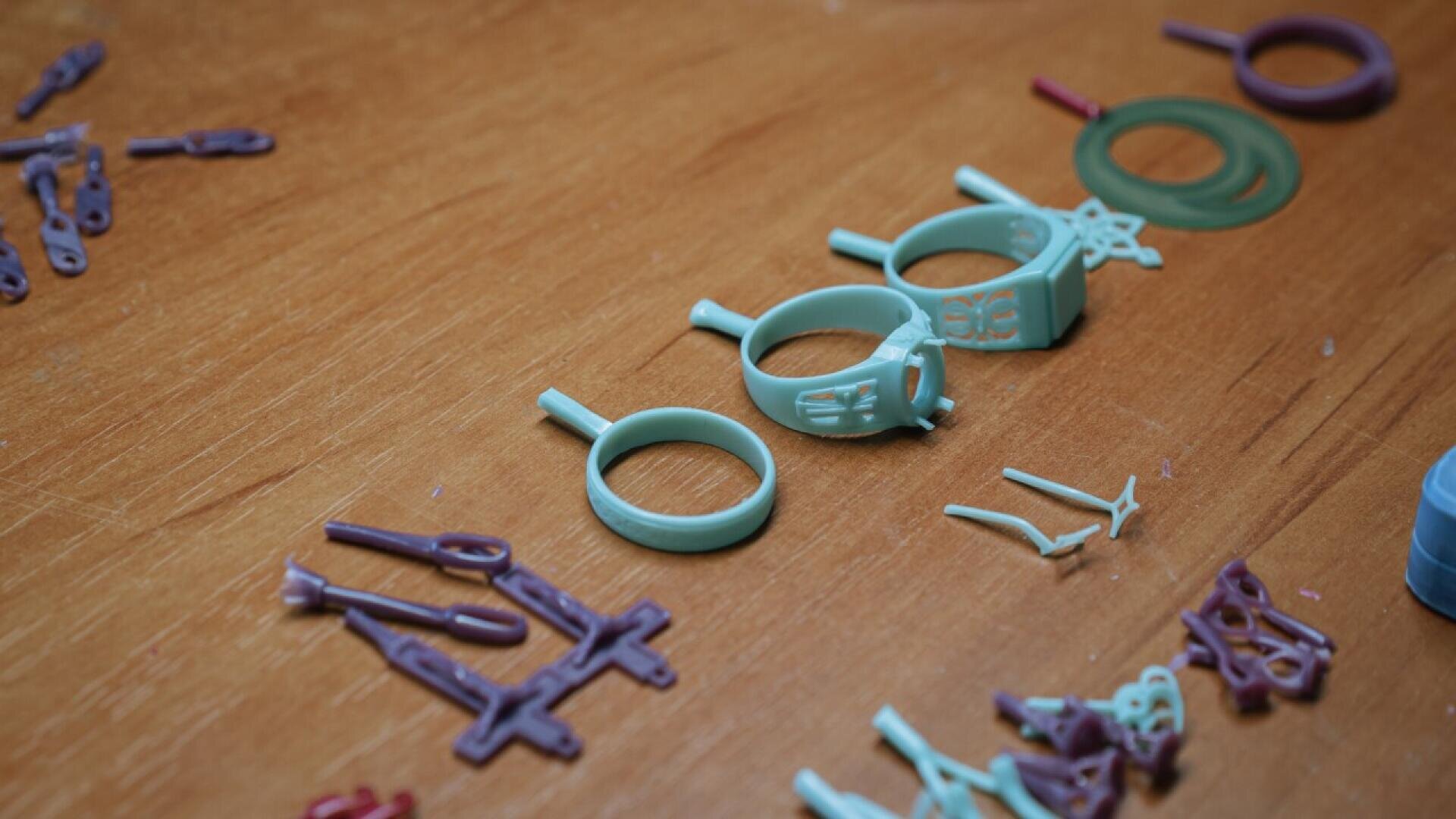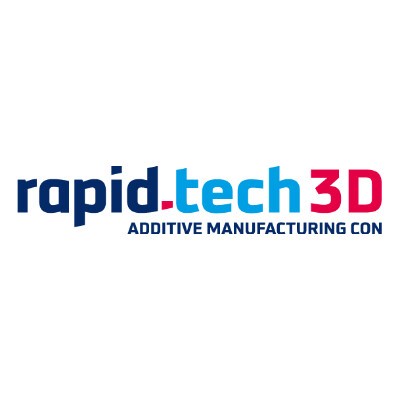3D printing in the jewelry industry
3D printing opens up new creative possibilities for the jewelry industry and offers precise, customized designs. Innovative in production and flexible in the use of materials, unique pieces of jewelry such as rings or necklaces can be efficiently produced.
The jewelry industry is changing, driven by the advanced technology of 3D printing. This method allows designers to fully exploit their creativity and realize complex, detailed designs with the highest precision. From one-off pieces to extensive collections, 3D printing offers numerous opportunities for customization and increased efficiency. The advantages of this technology are diverse and have a positive impact on the entire value chain. More and more jewelry manufacturers are discovering the potential of 3D printing and are relying on this pioneering method to complement and optimize traditional production processes. The application of 3D printing for jewelry opens up new horizons and redefines the limits of what is possible.
Diverse applications of 3D printing in the jewelry industry: From prototypes to tailor-made creations
A major application of 3D printing for jewelry is prototype development. Designers can quickly and inexpensively create models of their designs to test and refine before going into mass production. These prototypes can be printed from various materials such as plastic, wax or even metal to give a realistic idea of the final product. This method not only reduces development time, but also offers the possibility of realizing complex and intricate designs that would be difficult to achieve using traditional methods.
Another significant application is the production of bespoke jewelry. 3D printing allows designers to create customized pieces according to the specific wishes and needs of customers. This includes the ability to incorporate unique shapes, engravings and details that would be difficult to achieve using traditional methods. Especially in the area of wedding rings and other personal jewelry, this customization plays a major role as it offers customers a unique and personal experience.

In addition, 3D printing enables the production of jewelry in small batches. This is particularly beneficial for independent designers and small businesses who do not want to make large investments in expensive molds and machines. 3D printing allows them to produce their collections in small quantities at a reasonable cost and respond quickly to market trends and customer requests when needed. This offers a high level of flexibility and reduces financial risk.
The use of precious metals in 3D printing is another exciting area. Modern 3D printers can process materials such as gold, silver and platinum, making it possible to make high-quality jewelry directly from these metals. This opens up new possibilities for the design and manufacture of jewelry, as designers can create complex and detailed structures that would not be possible with traditional casting processes.
In addition, 3D printing plays an important role in the field of jewelry repair and restoration. Damaged or missing parts of jewelry can be recreated and replaced using precise 3D scans. This is particularly useful for the restoration of antique or sentimental pieces where accurate reproduction is crucial. At rapid.tech 3D, one of the most important information events in the field of generative manufacturing processes, various exhibitors will be showing their special applications of jewelry 3D printing.
Filaments in 3D printing for jewelry: From plastics to precious metals
A key factor in the success and versatility of 3D printing is the variety of materials that can be used in the process. These materials offer different properties and benefits that allow a wide range of jewelry to be produced, from simple models to complex and detailed designs.
A commonly used material in 3D printing for jewelry is plastic. Plastic models often serve as prototypes or as an intermediate step in the manufacturing process. These models can be printed with high precision and detail, helping designers test and refine their designs before investing in more expensive materials. Plastic is inexpensive and allows for quick adjustments, making the development process more efficient.
Wax is another important filament in 3D printing jewelry. Wax prints are often used in the lost wax process, a traditional method of making metal casting molds. This involves embedding the wax model in a heat-resistant mold and then melting it, creating a cavity that is filled with liquid metal. This process allows the production of highly detailed metal pieces and is particularly used in the production of one-off pieces and small series.

Metals play a central role in 3D printing jewelry. Thanks to advanced technologies, various metals can now be used directly in the 3D printing process. Gold, silver, platinum and titanium are some of the most popular metals used for 3D printing jewelry. These metals not only offer high durability and aesthetic quality, but also the ability to realize very complex and delicate designs that would be difficult to achieve using traditional methods.
Precious metals such as gold and silver are often used in the jewelry industry because they are both aesthetically pleasing and retain their value. 3D printing makes it possible to process these metals into intricate and detailed shapes, which greatly increases the creativity and innovation of designers. Platinum is another precious metal used in 3D printing and is characterized by its exceptional hardness and durability. Titanium, known for its lightness and strength, is also used in jewelry design, especially for modern and innovative designs.
In addition to the traditional metals and plastics, new filaments are also finding their way into 3D printing jewelry. These include ceramics and composites, which offer unique properties and aesthetic possibilities. Ceramics offer high resistance and a smooth surface that is ideal for certain jewelry designs. Composites, which are made from a mixture of different materials, can offer specific properties such as increased strength or special optical effects.
Another exciting area is that of bio-based and sustainable materials. With increasing awareness of environmental and sustainability issues, many designers and manufacturers are looking for environmentally friendly alternatives. Bio-based plastics and recycled metals are examples of such materials that can reduce the environmental footprint of jewelry production.
Advantages of 3D printing jewelry
3D printing of jewelry has introduced numerous advantages that benefit designers, manufacturers and customers alike. This innovative technology is revolutionizing the way jewelry is designed, manufactured and personalized. Here are some of the outstanding benefits of 3D printing in the jewelry industry:
- Design freedom and complexity: 3D printing allows designers to create extremely complex and detailed jewelry pieces that would be difficult or impossible to achieve using traditional manufacturing methods. Intricate patterns, complicated structures and unique shapes can be printed precisely and efficiently. This freedom encourages creativity and opens up new design possibilities.
- Rapid prototyping: 3D printing allows designers to quickly create and test prototypes of their designs. This significantly reduces development time and allows for quick adjustments to be made and different design variations to be tried out. This makes the entire design process faster and more efficient.
- Personalization and customization: A major advantage of 3D printing is the ability to personalize. Customers can have bespoke jewelry pieces designed according to their own ideas and specifications. This includes custom sizes, shapes, engravings and materials, resulting in unique, personalized pieces that have high emotional value.
- Material diversity: 3D printing technology enables the use of a wide range of materials, including precious metals such as gold, silver and platinum, but also plastics, wax and even ceramics. This diversity opens up numerous creative possibilities and allows designers to combine different materials and create unique effects.
- Faster time to market: The accelerated prototyping and production through 3D printing leads to faster time to market for new products. Designers can take their designs from concept to completion and bring them to market more quickly, giving them a competitive advantage.
- Innovation promotion: The use of 3D printing in the jewelry industry promotes continuous innovation. Designers and manufacturers are encouraged to explore new technologies and materials to create exceptional and innovative jewelry. This drives the industry forward and constantly opens up new opportunities.

Disadvantages of 3D printing jewelry
While 3D printing offers many benefits for jewelry, there are also numerous challenges that must be overcome to realize the full potential of this technology. These challenges relate to various aspects of the design and manufacturing process, as well as acceptance and integration into existing systems. Here are some of the key challenges of 3D printing in the jewelry industry:
- Material costs and availability: Precious metals and specialty materials used in 3D printing can be expensive. In addition, the availability of high-quality 3D printing materials is sometimes limited, which can further drive up costs and limit production options. This is particularly financially challenging for smaller companies.
- Technological limitations: Although 3D printing has made significant advances, there are still technological limitations. Not all printers can provide the same level of detail and precision, especially for very delicate or complex designs. Additionally, there are differences in quality and reliability between different 3D printing technologies and equipment.
- Design software and skills: 3D printing requires specialized design software and knowledge of how to use these tools. Many traditional jewelry designers are unfamiliar with these digital technologies, which is a hurdle to the adoption and use of 3D printing. Training and education are necessary to develop the required skills.
- Machinery and maintenance costs: 3D printers can be expensive to purchase and maintain. High-quality printers suitable for jewelry production require a significant initial investment. In addition, regular maintenance and repairs can add additional costs that can be a burden, especially for small businesses.
- Scalability: While 3D printing is ideal for prototypes and small batches, scalability in mass production is a challenge. The production speed of 3D printers is often slower compared to traditional mass production methods, making it difficult to produce large quantities of jewelry quickly and efficiently.

Future prospects of 3D printing of jewelry: Revolutionary developments and new possibilities
The future prospects of 3D printing in the jewelry industry are promising and offer enormous potential to further transform the industry. The continuous development of 3D printing technologies as well as the growing acceptance and integration of these technologies into the production process are opening up new possibilities and applications that could fundamentally change the way jewelry is designed, manufactured and marketed.
Technological advances in 3D printing will continue to play a central role in the development of the jewelry industry. Improvements in printing accuracy, speed and material variety will enable designers to create even more complex and detailed jewelry pieces. New printing processes such as multi-material printing and the integration of color printing technologies could revolutionize the design and manufacture of jewelry and offer new aesthetic possibilities. These advances will enable designers to fully exploit their creativity and realize innovative designs that were previously unthinkable. A significant trend in the future of 3D printing in the jewelry industry is increasing personalization and customization. Customers will have more and more opportunities to create jewelry pieces to their own specifications. This includes not only choosing shapes and materials, but also incorporating personal elements such as engravings or special designs. 3D printing platforms could allow customers to create their designs online and commission them directly, making the production of bespoke jewelry faster and easier. This personalization offers customers a unique and individual experience while creating a stronger bond between the customer and the jewelry piece.

Sustainability is becoming increasingly important in the jewelry industry, and 3D printing offers significant benefits here. By using materials wisely and reducing waste, the environmental footprint of jewelry production can be significantly reduced. In addition, 3D printing enables the use of recycled materials and bio-based plastics, which further promotes sustainability. The development of new environmentally friendly materials and printing processes will enable the jewelry industry to be more environmentally conscious and meet growing consumer demands for sustainable products.
The integration of 3D printing in the jewelry industry could also transform supply chains. With the ability to print jewelry on-site and on-demand, manufacturers can reduce inventory and respond more quickly to market trends and customer requests. This leads to more efficient and flexible production and can increase the competitiveness of companies. In addition, decentralized production could reduce transport costs and CO2 emissions, which also contributes to sustainability.
In the future, 3D printing could also further blur the lines between designers and consumers. Platforms and software solutions could enable anyone to design and print jewelry, regardless of their technical background. This would represent a democratization of jewelry design and trigger a new wave of creativity and innovation in the industry.
In summary, the future prospects of 3D printing in the jewelry industry are extremely promising. The continuous technological advances, the increasing personalization and customization, the improvement of sustainability, and the efficiency gains in production and supply chain will change the industry forever. 3D printing offers new opportunities for designers, manufacturers and consumers and will revolutionize the way jewelry is designed and manufactured.


